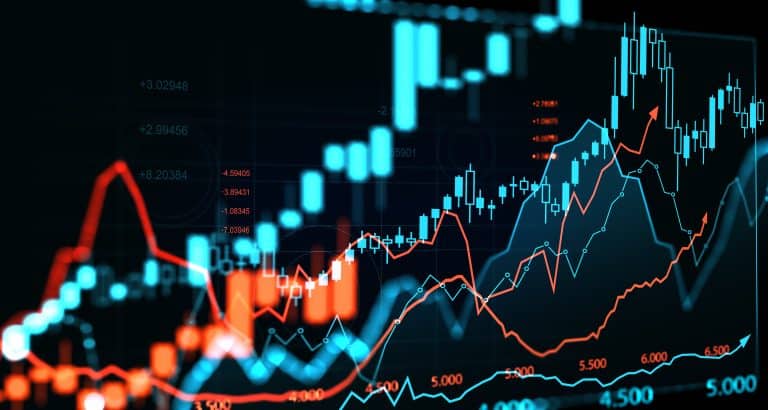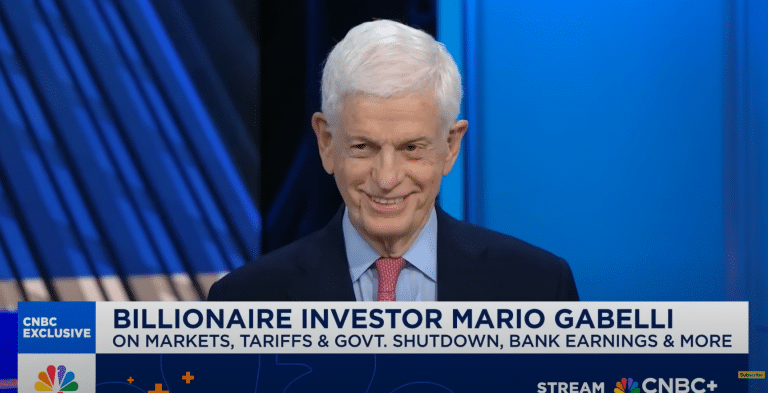1. Resurgence of Mergers & Acquisitions Activity – Chris Marangi and Kevin Dreyer, Co-CIOs of Value
Industry consolidation is among our favorite catalysts because it can immediately surface PMV either as a target or as a company similarly situated to a target. Higher interest rates and activist federal agencies have depressed M&A activity over the past two years; 2024 saw the value of US announced deals tick-up 3% to $2.6 trillion, barely half the record set in 2021. A new regime in Washington is almost certain to spur a resurgence of deal activity, particularly for sectors experiencing significant secular growth or upheaval and/or intensified competition from the tech giants. Among our focus in this respect: media/telecom, food, autos and aerospace. To be clear, although M&A can be a powerful catalyst, we aren’t simply assembling a basket of takeover candidates. In many cases our analysts attempt to identify themes impacting their sectors, some of which are the subject of current investment, others the subject of additional research:
- Powering up: For the first time in decades, growth in power demand exceeds that of GDP. At the margin, climate-friendly power sources including nuclear, wind, solar and carbon capture and sequestration-equipped natural gas plants will feed AI servers and electric vehicles. Generation and transmission will require significant investment opening opportunities for utilities, equipment suppliers and construction service providers.
- Artificial intelligence: As we wrote last year, AI will undoubtedly transform almost all aspects of life in ways we are only beginning to comprehend. The list of long-term winners and losers isn’t necessarily apparent but is likely to include some of today’s largest companies and some not yet founded. Our analysts have been experimenting with AI as we research both direct and derivative plays on an advancement that could rival the birth of the internet.
- Experiential economy: In some ways the anti-AI play, live entertainment and travel fill the need for human togetherness and cater to a generational preference for experiences over things. Sports assets, scarce in the public markets, are in some ways an “eye-of-the-beholder” asset described in our introduction but have proven durable storers of value of time.
- Infrastructure: An effort to fortify the country’s logistics and connectivity would seem central to any America First agenda and goes well beyond the $500 billion Inflation Reduction Act. In addition to creating jobs, investment in highways, fabs, the electrical grid, etc. creates demand for materials and equipment and the stocks of the companies that provide them.
- Weight loss miracle drugs: Each month seems to bring another ailment addressed by the GLP-1 class of drugs which may have profound implications – good and bad – for companies across the food/beverage and healthcare sectors.
- Financial innovation: The outperformance this year of companies categorized as “financials” goes beyond the shape of the yield curve. The digitization of payments and financial transactions has led to gains in revenue and productivity for card companies and the nascent entry of alternative asset managers into the retail wealth channel (a development not without risk for the transmission of losses across the economy) opens an enormous addressable market for them.
2. Generative AI Phase 2: Transitioning from Research to Commercialization – John Belton, Co-Portfolio Manager of the Gabelli Growth Innovators ETF (GGRW)
The launch of ChatGPT in November, 2022 showcased the potential of generative AI and brought the technology into the mainstream. Since then, tech companies have embarked on an unprecedented investment cycle, helping set the stage for a new generation of AI-native companies and applications. So far, AI investment returns have largely accrued to companies involved in the buildout of computing infrastructure – semiconductor design specialists and manufacturers; cloud computing platforms; and various players involved in the development of AI datacenters. On the other hand, investment returns for those creating end user-facing products and services utilizing AI technology have lagged. This is a dynamic we expect will begin to reverse over the coming years as generative AI migrates from research labs to user applications and enters a new phase of commercialization.
First, watch for leading foundation models and assistants to begin defining business models as usage scales towards ubiquity. Major players have shown impressive user growth over the last few years. ChatGPT weekly active users (WAU) have increased from 100mm in late-2023 to 200mm by August, 2024, and Meta AI’s monthly active users (MAU) eclipsed 600mm last month barely a year after launching. Interestingly, adoption curves for these services resemble patterns observed during the early days of social media. Survey data suggests ChatGPT is now used by roughly 10% of the US population, neatly matching Facebook’s penetration at a similar stage of its lifecycle ~two years after launch. What seemed like extraordinary growth for Facebook at the time obviously proved to be only the tip of the iceberg, and it isn’t difficult to foresee a similar dynamic for generative AI as consumers deepen their understanding of how useful the technology can be.
Second, watch for vertical-specific applications to proliferate with a few early winners emerging from the pack. Until now, generative AI is a technology that, in theory, could have far-reaching use cases, spanning life sciences, financial services, enterprise software, robotics, defense, and manufacturing to name a few. Over the coming years, expect this theory becomes more of a reality as products commercialize and prove out utility in the field.
In short, winners in the initial phase of the generative AI era have largely centered on companies providing the “picks and shovels” to researchers and startups setting out to build the products and services which harness the AI’s potential. We believe the industry is on the verge of moving to a new phase, where AI products and services become developed enough to address real world use cases and support commercial business models.
3. Geopolitical Tensions: Defense Spending on the Rise – Tony Bancroft, Portfolio Manager of the Gabelli Commercial Aerospace and Defense ETF (GCAD)
The rise of geopolitical conflict, especially due to factors like the ongoing conflict in Ukraine, tensions around Taiwan, and rising threats from countries like Russia and China, has led to significant changes in NATO and its Allies defense budgets. Here are some key trends:
- Increased Defense Spending: Many NATO countries, particularly those in Eastern Europe and the Baltics, have boosted their defense budgets. This increase is largely driven by the need to strengthen military capabilities in response to Russian aggression. For example, countries like Poland, the Baltic states, and others on NATO’s eastern flank have significantly raised defense spending.
- Commitment to NATO’s Defense Goals: NATO’s members are aiming to meet the alliance’s goal of spending 2% of GDP on defense. As of 2024, several countries are expected to increase defense spending to reach or exceed this target, acknowledging the evolving threat landscape. Though NATO is still expected to have a $44 billion gap in its 2% of GDP target for 2025.
- U.S. Military and Defense Budget: The United States, as the largest NATO member, has maintained a robust defense budget, with an emphasis on modernizing its military capabilities to counter threats from both Russia and China. U.S. defense spending has seen increases to maintain its global influence and deter potential adversaries.
- Focus on Modernization and Deterrence: Both NATO and U.S. allies are prioritizing modernization, with investments in advanced technologies, cyber defense, and military readiness. This includes spending on air and missile defense systems, naval capabilities, and increased troop deployments in strategic locations.
- Public and Political Pressure: In many allied countries, rising geopolitical threats are also accompanied by public and political pressure to strengthen national security, leading to more government commitments to defense spending.
Overall, the increase in geopolitical instability is driving more NATO members to prioritize defense and military investments, resulting in higher defense budgets across Europe and the U.S., as countries seek to bolster their deterrence and defense capabilities against evolving global threats.
4. Infrastructure Improvements to Make Utilities Attractive – Tim Winter, Co-Portfolio Manager of the Gabelli Utilities Fund (GABUX)
In 2025, we expect utility stocks to benefit from structural tailwinds of accelerated electric demand, infrastructure investment and stronger EPS growth. The US is in a global ‘arms race’ for artificial intelligence superiority which requires massive new power hungry data centers. The mega-cap tech companies (hyperscalers) including MSFT, GOOG, META, and AMZN are aggressively courting electric utilities to build the infrastructure to power mega-data centers, some of which use as much power as entire cities. In addition, ongoing electrification and manufacturing on-shoring are adding to electric demand. Policymakers are supportive of utilities investing in infrastructure investment to try to keep up with demand growth.
The first wave of winners were the merchant or non-regulated power companies. Regulated electric utilities represent the second wave and will benefit from selling existing power capacity, adding power capacity (including batteries) and upgrading/expanding the transmission and distribution network. Policymakers also encourage de-carbonization, renewable energy and conservation, but the new administration is likely to support an “all-of-the-above power” mantra. A more economical approach to net-zero means more gas-fired generation, delayed coal-retirements, nuclear development, and ongoing renewable development. We expect the relaxation of some environmental and regulatory rules to help “green light” development. The confluence of these dynamics support ongoing strong EPS growth.
The consensus among utility executives and power industry players assumes the transformation to a lower-carbon economy continues in earnest, despite negative campaign rhetoric regarding clean energy subsidies. We expect the Trump-Republican administration to take a more economic approach to decarbonization, including minor changes to the 2022 Inflation Reduction Act’s (IRA). The important clean energy (wind, solar, and battery storage) tax credits are likely to remain intact because republican-led states benefit disproportionately (80%/20%) from the economic development and thin republican margins in the Senate (53-47) and House (217-215). In addition, wind, solar and battery storage are economical and take the least amount of time to build. The existing gas-turbine supply chain wait is nearly 5-years. Further, clean energy has significant societal support, state mandates and corporate ESG backing. Finally, federal AI policy necessitates ALL OF THE ABOVE POWER. However, IRA uncertainty will likely continue until late 2025.
We expect higher sales and rate base growth to lead to higher EPS growth. Only two electric utilities to have raised EPS CAGRs on the data-center theme, but most expect others to raise over the next few years. In addition, we expect accelerated electric demand and need for bigger balance sheets lead to consolidation.
5. Economic Safe Haven: Gold – Chris Mancini, Co-Portfolio Manager of the Gabelli Gold Fund (GOLDX)
Gold is fundamentally a hard asset which is extremely rare, no one’s liability, and not replicable. Although it generates no yield, and demand for gold is therefore affected by changes in interest rates and the incremental opportunity cost to holding the metal, it is the fundamental qualities of gold which we believe will ultimately drive its value. In 2025 there are many reasons why demand for gold might grow. These include:
- Heightened geopolitical tension: When Russia invaded Ukraine, the United States and Europe confiscated Russia’s dollar and euro denominated reserves. China holds over $1 trillion of similar reserves which it is actively selling to buy gold. If rising tensions increase the risk of further reserve confiscation, demand for gold should rise as global central banks increasingly diversify into an asset which cannot be digitally confiscated.
- Uncertain economic direction: If inflation is sticky while the economic activity cools, the US economy could head towards stagflation. If so, demand for gold should rise as savers look for an asset which will hold its value as prices rise and real earnings decline.
- A rising federal deficit and debt: As campaign promises are fulfilled, it’s likely that the US will add meaningfully to its $36 trillion debt burden. If “bond vigilantes” resurface and sell bonds due to increasing repayment risk, demand for gold should rise as the market realizes its value as an asset which is no one’s liability.
During the first six months of 2024, the price of gold rose as central banks bought. This happened notwithstanding rising interest rates and retail-led outflows from gold-backed ETFs. When interest rates started to decline, retail bought gold-backed ETFs and the price of gold rallied further. These inflows have reversed since the election, as the market prices a “goldilocks” economy. If any of the risks mentioned above materialize, demand for gold will likely accelerate. We believe that gold now presents a good opportunity for investors looking for a haven during uncertain times.














